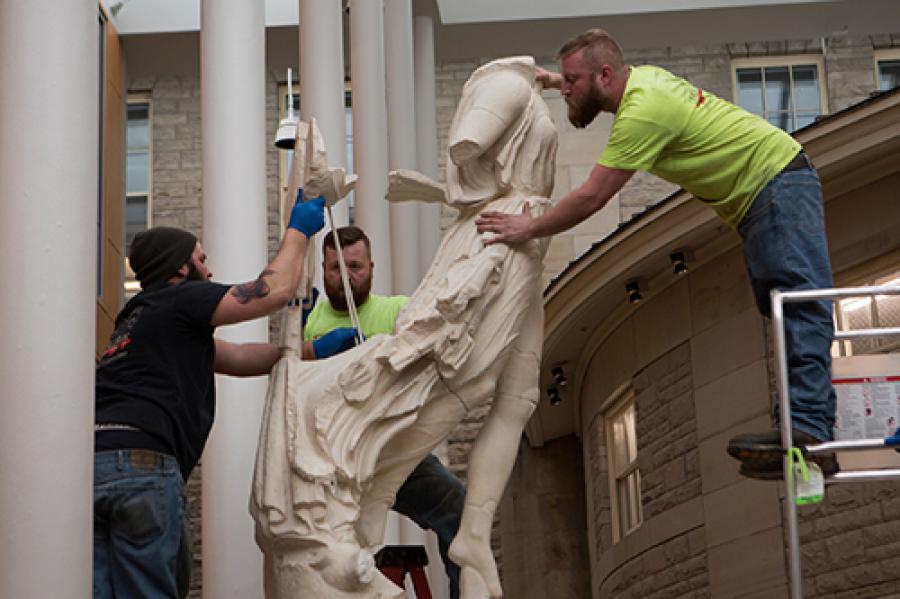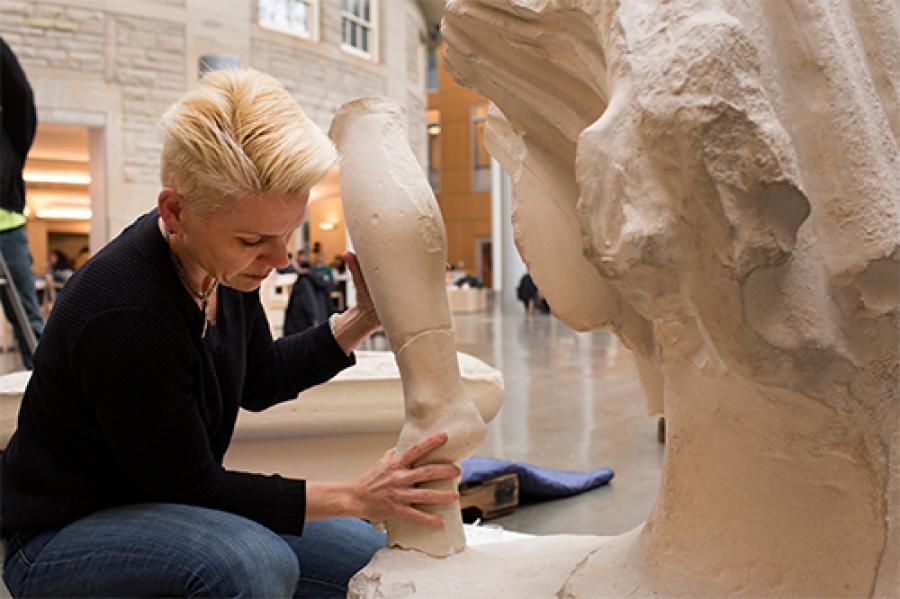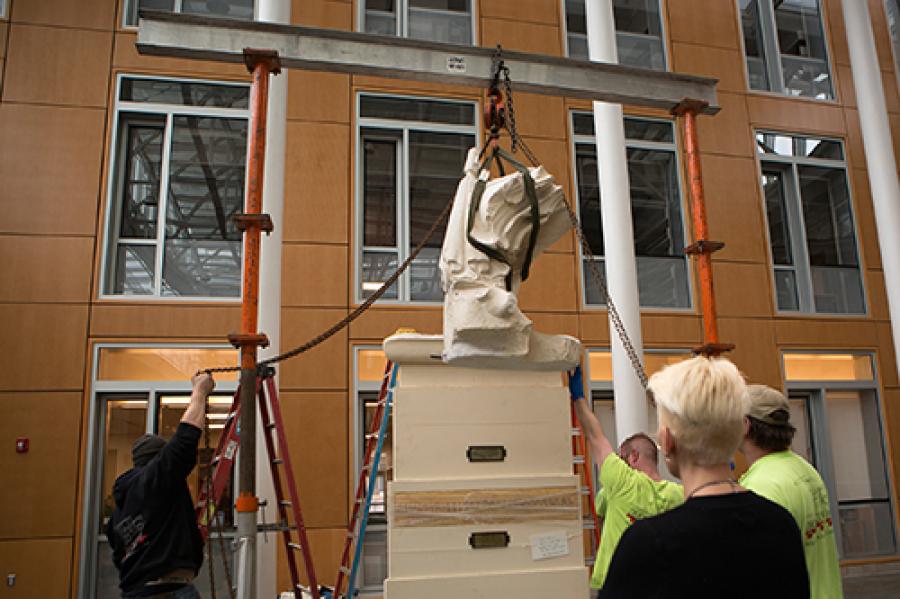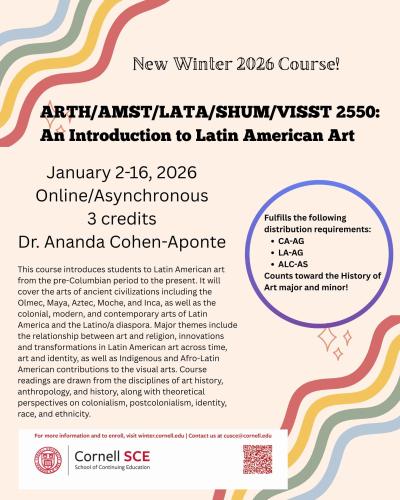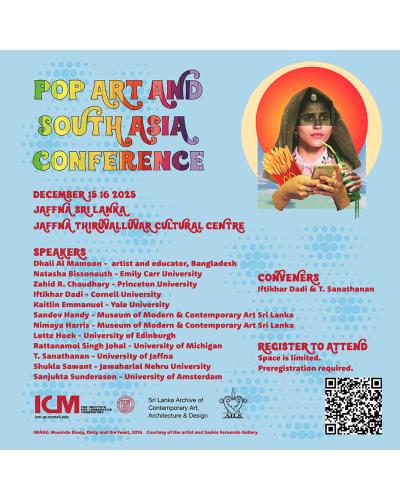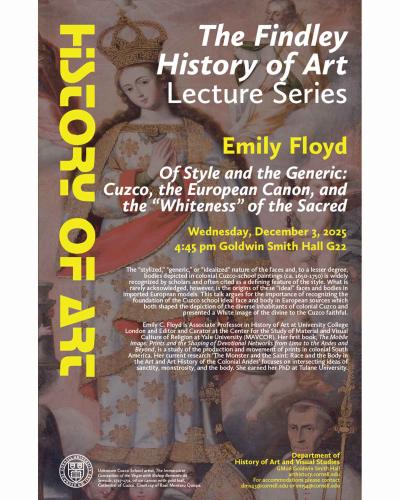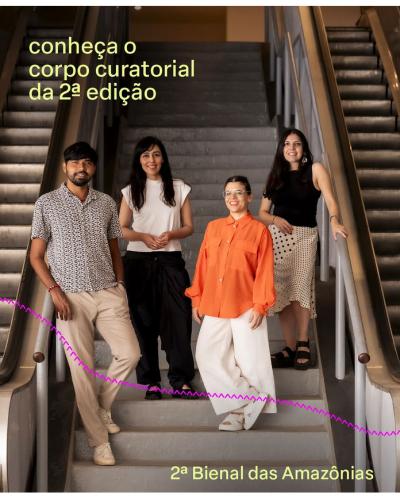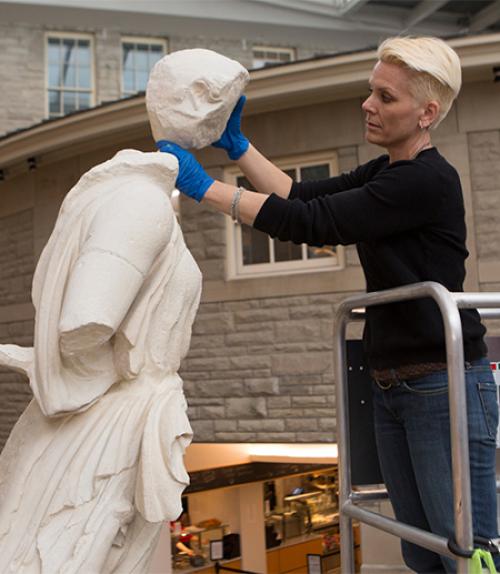Once, she soared above the heads of Cornell greats like A.A. Ammons and Roald Hoffmann as they debated the great questions of their time in the Cast Gallery of Goldwin Smith, later turned into the Temple of Zeus café. Then for years she lay forgotten, abandoned to dust and mold and neglect.
But as of Feb. 10, the Flying Nike soars again from her pedestal above the heads of Cornell students and faculty, looking as if she could take off at any moment through the glass-encased roof of the new Groos Family Atrium in Klarman Hall.
The Flying Nike is one of many restored pieces from the College of Arts & Sciences plaster Cast Collection that will grace Klarman Hall’s new spaces. It is fitting that she was the first, though, as she is perhaps the most visually striking piece in the classical collection that was once in the “first rank” of American educational collections. The Flying Nike of Paionios replicates a Winged Victory statue set up close to the Temple of Zeus at Olympia during the late fifth century BCE, and formed a centerpiece of the original Cornell Museum of Archaeology in McGraw Hall.
“We are thrilled to be giving a new home in Klarman Hall to some of the Cast Collection’s significant pieces,” says Gretchen Ritter, the Harold Tanner Dean of Arts & Sciences. “Their new placement honors the history of the collection and its relationship to Goldwin Smith over the years, and the work of the classics and history of art departments in preserving this important college treasure.”
“The installation integrates the new Klarman Hall building and the old Goldwin Smith building in a way that really honors Cornell’s history,” adds Verity Platt, curator of the cast collection and associate professor of classics and history of art. “Klarman’s light-filled atrium is the perfect place to share the casts’ importance to research, teaching, and the arts.”
Cornell’s collection of 19th century casts of ancient Greek, Roman, Egyptian and medieval pieces was compiled in the 1890s with funds from trustee Henry Sage. The ground floor of Goldwin Smith Hall was designed specifically for the Museum of Classical Archaeology, as the Cast Collection was then known, which was moved from McGraw Hall to Goldwin Smith in 1906.
“The inclusion of casts within the new humanities building acknowledges this local history, while enhancing the space with dramatic visual experiences, and offering exciting teaching opportunities for the humanities,” says Platt. “The casts are really dynamic objects, representing both tradition and history and their reinvention, because the casts have constantly invited new modes of engagement over the years.”
Two Venus statues that have been cleaned and restored and which served as a highlight of the “Cast and Present” show at the Johnson Museum last spring, will also be installed in the atrium. These include the Venus Colonna and the Capitoline Venus, each of them an emulation of the original Aphrodite of Knidos, supposedly the first life-size nude statue in western culture. Conservation treatment of the Venus Colonna and Capitoline Venus, as well as the Flying Nike of Paionios, was generously funded by Madeleine Bennett ‘48.
Platt notes that the Venus statues offer an invaluable tool for teaching such diverse topics as the history of gender and sexuality, ancient myth and religion, serial reproduction and the notion of the “copy,” and the reception of classical antiquity across the humanities, as well as their influence on training in the fine arts.
Also scheduled to be installed are a group of casts copied from bronzes from the Villa of the Papyri in Herculaneum, painted to look like the originals, as well as a series of friezes. These include the Harpy Monument, Nereid Monument and Temple of Athena Nike. Platt explains that she chose friezes that were provocative to think with and that brought in Near Eastern as well as classical traditions.
“They are wonderful for learning,” says Annetta Alexandridis, associate professor of history of art and classics, who has worked hard to conserve and promote the collection since her arrival at Cornell. “The casts are the perfect textbook in 3-D.”
The freize restoration and installation in Klarman Hall has been made possible in part by a gift from Carolyn Levine Coplan ’76 , Neil L. Coplan ’76, in honor of their 40th class reunion and wedding anniversary, and Alison Coplan ’11, in honor of her fifth class reunion.
“We’re very grateful for their generosity,” says Platt, while acknowledging that there is still much more to be done. “This is a preliminary stage in a multi-year project to conserve, restore and display what was once one of the best cast collections in the United States. We welcome additional support for this exciting project, which has engaged numerous students as well as professional art conservators.”
For more information about the history of the casts and recent work with the casts, watch "Firing the Canon: The Cornell Casts and their Discontents" below.
Linda B. Glaser is a staff writer for the College of Arts & Sciences

